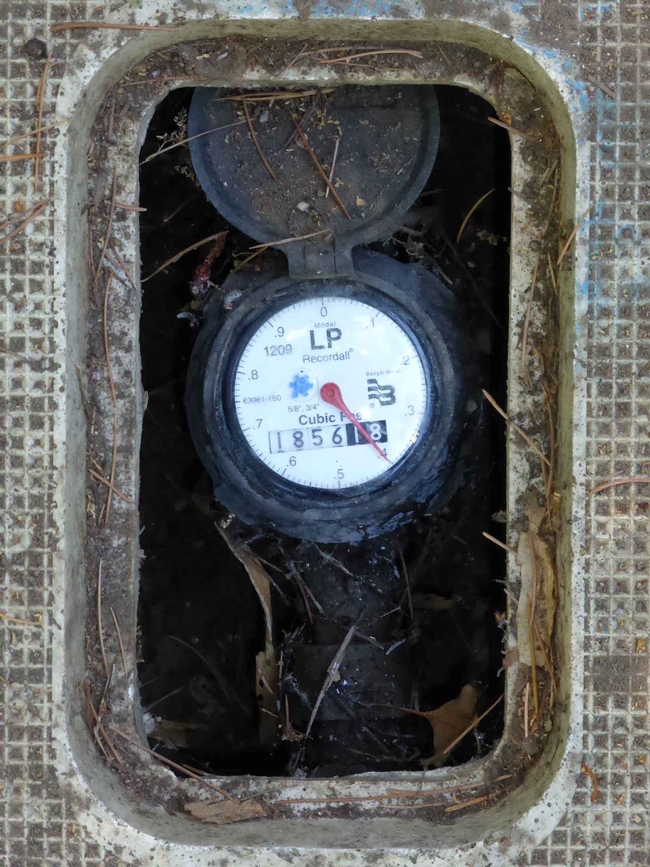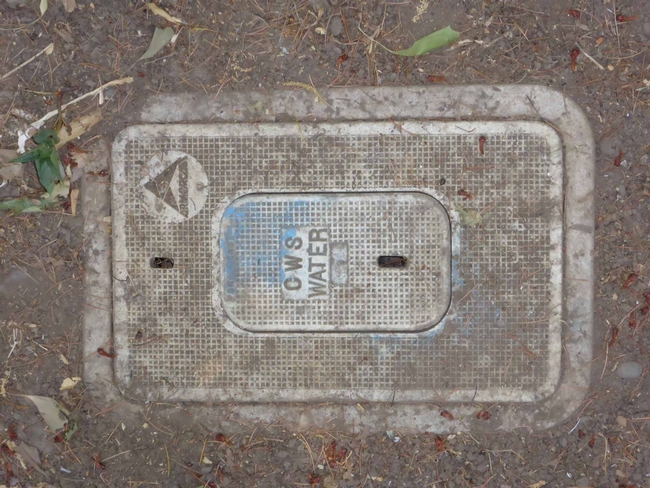On Thursday, July 8, Governor Gavin Newsom asked California residents to cut back their water usage by 15%. Butte County is among the 50 California counties (out of a total of 58 counties) now included in Newsom's declaration of drought emergency. But how do you know just how much water you are using? Buried in the ground outside your home lies the answer: your water meter.
The water meter is an important tool in helping us conserve water. These are embedded in the ground and covered with a concrete plate. Most are located in the front yard of a residential property near the property line and close to the street.
To check your water usage, first locate your meter. Bring a screwdriver, a flashlight, and pen and paper with you. Use the screwdriver (or similar lever-type tool) to wedge into the slot on the “lid” over the meter, and lift it off; then shine the flashlight inside to make sure no black widows or other dangerous creatures are lurking in there. You will probably have to brush some debris off the face of the meter. When you do, you will be looking at a large circular dial, a smaller blue dial, and, below them both, a series of numbers. Write those numbers down. This is the base you will begin with. Once you have those numbers, you can start to calculate your daily water consumption.

There are several ways to use this information to become a more informed water user and to reduce overall water consumption.
- If you note down the water gauge number late on a night when you are not irrigating, then check the gauge again in the morning, you should be able to tell if you have a water leak somewhere on your property. If the gauge tells you that water has been used when you have not, to your knowledge, used any water, somehow water is leaking out.
- Test how much water you actually use when hand watering with a hose. It certainly seems like hand watering uses much less water than sprinklers – but does it really? Check the number on your water meter, then, using a stop watch, see how much water you actually use in one minute with the hose on full force. Or see how many seconds it takes to fill up a five-gallon bucket or watering can.
- Check that water meter number, then take your usual shower, and check that number afterwards. Subtract the smaller number from the larger one and multiply that decimal number times 748. Your answer will be the number of gallons used.
- If you have an automatic watering system, record your pre- and post-irrigation meter readings, then use the procedure above to calculate gallons of water used each time your irrigation system runs.
By looking at the paper copy of their water bill, or logging into their account online, Cal Water customers can view graphs of their monthly water usage, comparing 2021 with 2020 (by clicking “usage graphs” at the bottom of the Cal Water home page, 2019, 2020 and 2021 can be compared).
Cal Water includes many water conservation tips on its website, many of which will be familiar to regular readers of The Real Dirt. For example:
- plant native, low-water, and drought-resistant plants
- limit lawn area
- plant in “zones” that group plants according to their water needs
- keep shade plants in the shade so they do not require additional water
- place water-loving plants at the bottom of slopes to maximize water-runoff
- mulch generously around plants and shrubs to limit weeds and maximize water retention
- check sprinkler system for broken sprinkler heads and hidden leaks
Cal Water also lists prohibited uses of water, which include the following:
- Using water on outdoor landscaping that causes runoff onto adjacent properties or paved areas
- Using water during or within 48 hours after measurable rainfall
- Using a hose to wash vehicles unless the hose has a shutoff nozzle or similar device
- Using water in a fountain or other decorative water feature, except where part of a recirculating system
Importantly, single-family residential customers can order indoor plumbing kits to aid in conserving water in their homes. These free kits include high-efficiency showerheads, faucet aerators, and other tools for cutting down indoor water usage. To order a kit, or for more information on conserving water, go to the Cal Water website.
UC Master Gardeners of Butte County are part of the University of California Cooperative Extension (UCCE) system. To learn more about us and our upcoming events, and for help with gardening in our area, visit our website. If you have a gardening question or problem, email the Hotline at mgbutte@ucanr.edu (preferred) or call (530) 538-7201.
